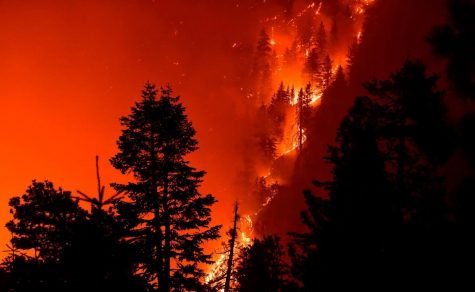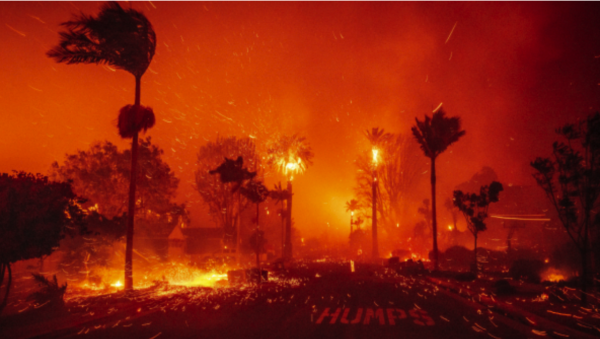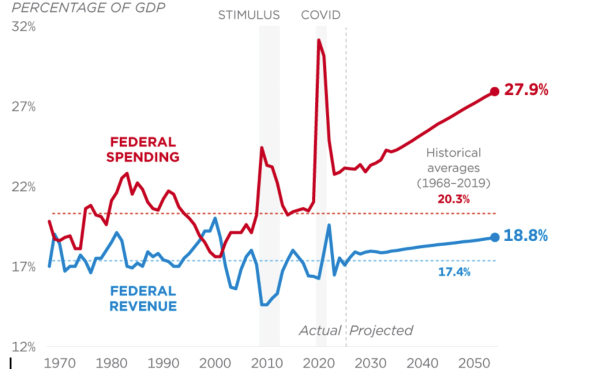Wildfires continue to engulf the western United States
Photo credit Frederic J. Brown/AFP/Getty Images (cnn.com)

California is up in flames. For the past couple of weeks, the state’s wildfires have garnered national attention for their severity, forcing thousands of people residing on the West Coast to evacuate. Acres of beautiful redwoods and mountain sides have been affected by the fires, which has alerted the public to the environmental impact of the blazes. The climate fingerprint on the California fires is becoming more noticeable.
California has long been plagued by a severe wildfire season, normally beginning in early summer and continuing through autumn. In past years, droughts and unbearably hot temperatures have caused dry kindling to ignite on the forest floor.
This season, the fires broke records, torching over 3 million acres of inhabited and uninhabited land and spanning throughout the west . In contrast to previous years, California has experienced six of its top 20 wildfires on record in 2020 alone, according to the Wall Street Journal. Regardless of local initiatives, the geographic location of California leaves it vulnerable to the effects of climate change.
The state’s most recent blaze, dubbed the “Bear Fire,” started because of the activities of a gender-reveal party. In 2018, another infamous year, an ember-filled camp pit began a series of fires that killed 86 people.
“Possible solutions to climate change include stopping greenhouse gas emissions,” said Miranda Wilson, an AP Environmental Sciences teacher at Westminster. Greenhouse gases are dangerous gases that trap heat in the atmosphere and are the main contributors to global warming. They consist mainly of carbon dioxide, methane, nitrous oxide, and fluorinated gases.
With the population density of California increasing yearly, it is expected that higher pollution levels will lead to longer, more severe fire seasons and air quality. Not only do the fires have long-term climate effects globally, they can also deeply wound California’s economy. Currently, the United States is not equipped to deal with the widespread economic damage caused by the blazes, leaving the state and its citizens to fend for themselves financially.
“The U.S. is the epitome of poor climate health and lack of sustainability plans,” said junior Eula Doele.
The federal government mostly leaves climate laws to the states, making national climate action nearly impossible. This casting aside of climate legislation forces states like California to spend state taxpayer money to patch federal government-sized climate catastrophes.
“I can see the progression of the fires over time,” said Frances Munger, a sophomore who previously lived in Eugene, Oregon. “Luckily, the fires never came close to Eugene, but it’s really upsetting to see the lack of control and action in relation to the fires on the West Coast.”
Many fear for friends and family stuck in western states as the wildfires inch over borders, worsen air quality, and create a smoky film for miles.
“It’s a very emotional time. The fires are extremely anxiety-inducing,” said Munger.
Ultimately, the emotional and scientific approach to the wildfires proposes a single deciding factor for the future: what will humanity do to prevent further dangerous wildfire seasons? Many acres of California will continue to burn for years to come, and a millennium of natural beauty has already been destroyed and scarred by the blazes.
“It is saddening to see these beautiful, natural places destroyed so suddenly,” said Munger.





